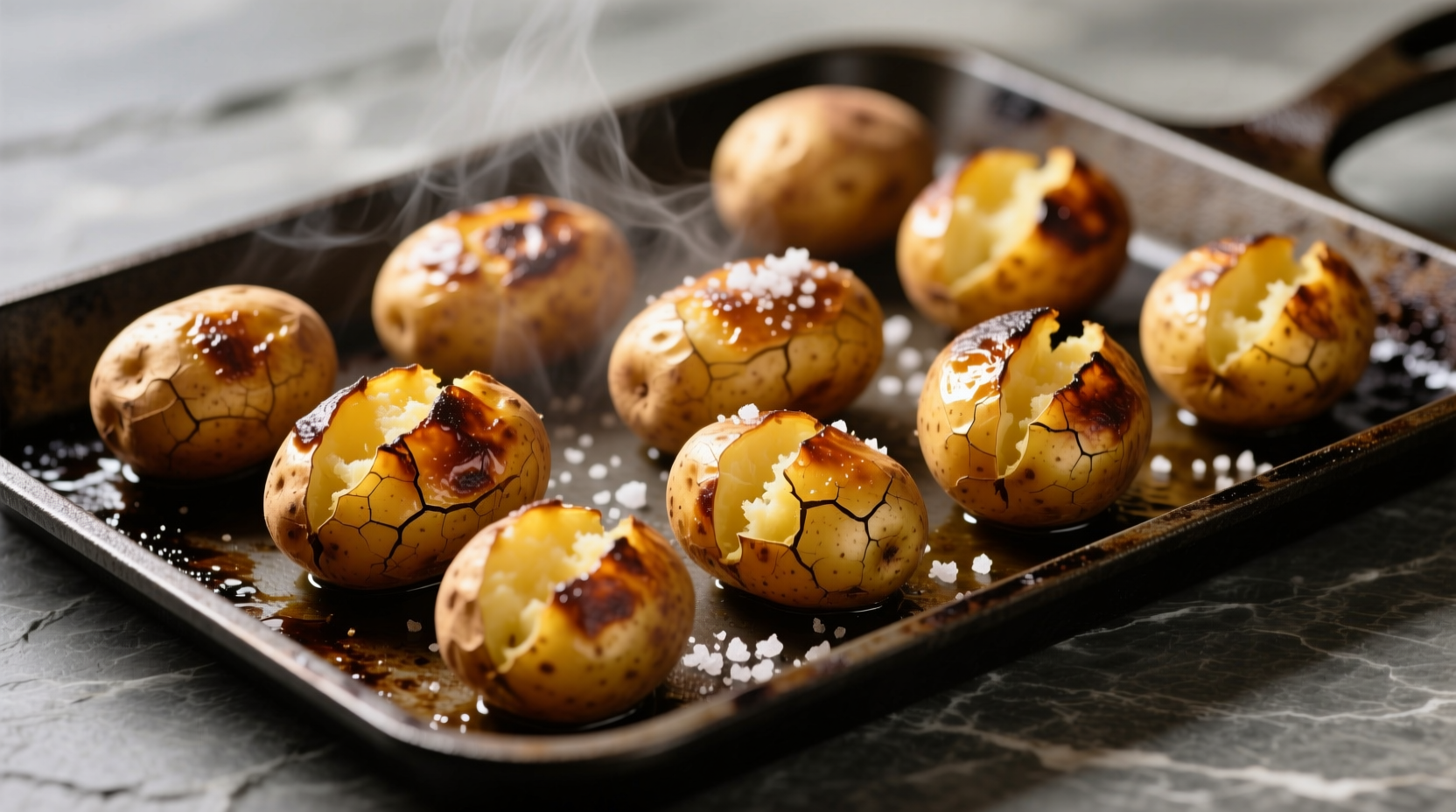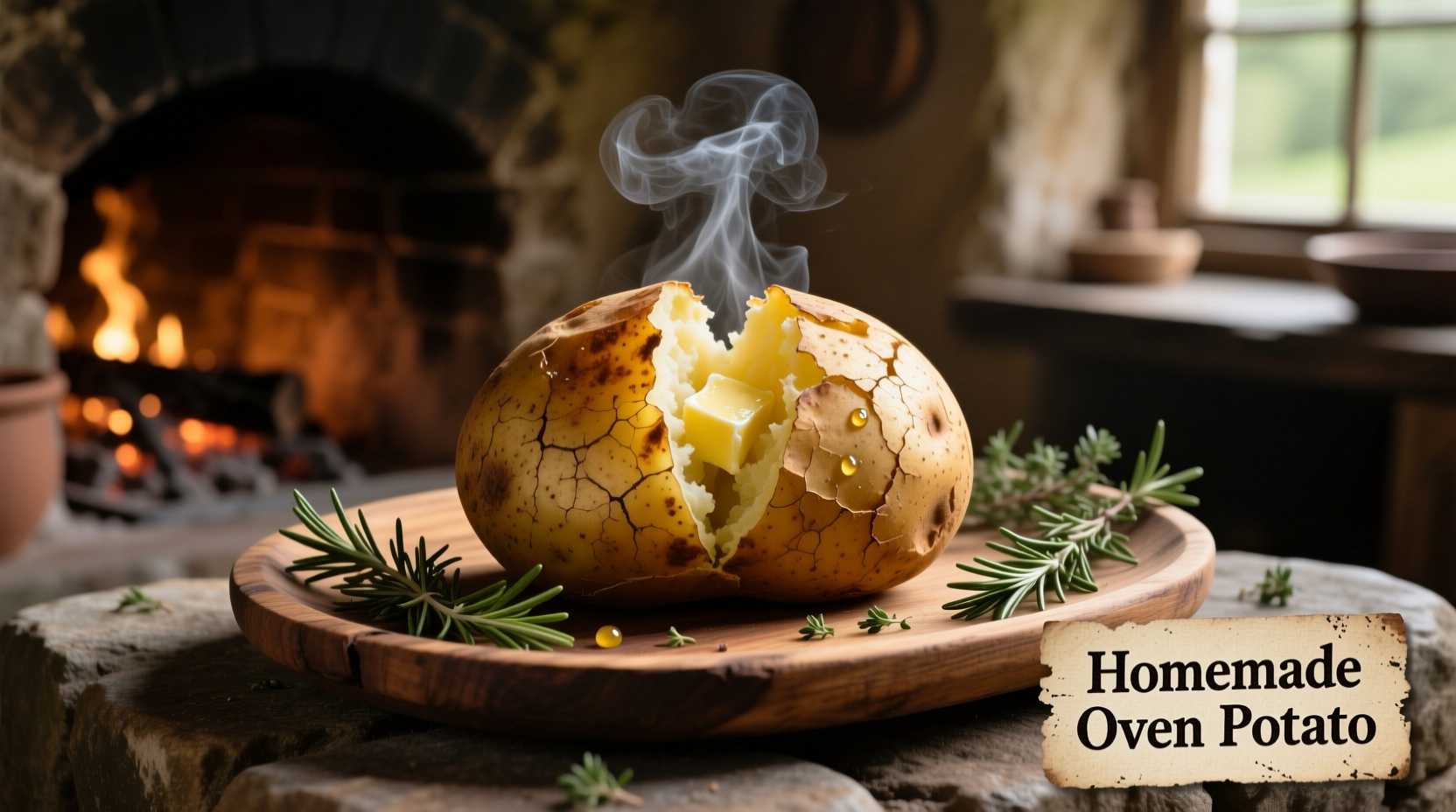The perfect oven-baked potato requires russet or Yukon Gold varieties, 400°F (204°C) oven temperature, and 45-60 minutes cooking time until internal temperature reaches 205°F (96°C). Proper preparation includes thorough scrubbing, strategic pricking, optional oil application, and resting time after baking for optimal texture.
Nothing beats the satisfying crunch of perfectly roasted potatoes fresh from the oven. Whether you're preparing a weeknight dinner or special occasion meal, mastering oven potatoes transforms this humble tuber into a culinary star. This guide delivers professional chef techniques you can implement immediately - no fancy equipment required. You'll learn exactly which potato varieties work best, precise temperature control methods, and science-backed preparation steps that guarantee crispy exteriors and fluffy interiors every time.
Why Oven Potatoes Deserve Your Attention
While microwave methods offer speed, oven-baked potatoes develop complex flavors through the Maillard reaction - that magical chemical process creating rich browning and deep flavor compounds. According to the USDA Food Safety and Inspection Service, properly cooked potatoes reach an internal temperature of 205°F (96°C), ensuring both food safety and ideal starch gelatinization for that signature fluffy texture.
Your Oven Potato Journey: Step-by-Step
Preparation Phase: Setting Up for Success
Start with clean hands and workspace. Select firm potatoes without green spots or sprouts - russets for classic baked potatoes, Yukon Golds for richer flavor. The University of Minnesota Extension confirms that proper washing removes potential soil contaminants while preserving nutrients better than peeling.
| Potato Variety | Best For | Cooking Time |
|---|---|---|
| Russet | Classic baked potatoes | 50-60 minutes |
| Yukon Gold | Roasted wedges | 40-50 minutes |
| Red Potatoes | Smaller roasted portions | 35-45 minutes |
Cooking Execution: Precision Matters
Dry potatoes thoroughly after washing - moisture prevents crispiness. Prick 4-6 times with fork to allow steam escape (prevents bursting). For restaurant-quality results, rub with olive oil and coarse salt before baking. Position directly on oven rack with baking sheet below to catch drips - this allows heat circulation for even cooking.

Troubleshooting Common Issues
Soggy skin? Your oven temperature was too low or potatoes weren't dried properly. Dense interior? Potatoes weren't fully cooked - always verify with instant-read thermometer. Burnt bottoms? Use convection setting or rotate pan halfway through cooking. The American Culinary Federation recommends checking potatoes at 40 minutes, then every 5 minutes thereafter to prevent overcooking.
Advanced Techniques for Culinary Excellence
For next-level results, try these professional methods:
- Par-cook method: Microwave potatoes 5 minutes before finishing in oven for faster cooking with perfect texture
- Steam finish: Cover with foil for last 10 minutes to create steam pocket for extra-fluffy interior
- Crisp boost: Increase oven temperature to 425°F (218°C) for final 5 minutes for maximum crunch
Storage and Reheating Guidelines
Refrigerate cooled potatoes within 2 hours in airtight container. The FDA Food Code specifies cooked potatoes should not remain in the temperature danger zone (40°F-140°F/4°C-60°C) for more than 2 hours. Reheat in 375°F (190°C) oven for 15-20 minutes - this preserves texture better than microwave methods which often create rubbery results.
Flavor Variations to Explore
Once you've mastered the basics, experiment with these chef-approved variations:
- Herb-infused: Toss with rosemary and thyme before baking
- Spiced: Coat with smoked paprika and garlic powder
- Cheesy finish: Top with sharp cheddar during last 5 minutes of cooking
Nutritional Benefits Worth Noting
According to USDA FoodData Central, a medium baked potato with skin provides 160 calories, 4g fiber, and significant potassium and vitamin C. Retaining the skin increases fiber content by 50% compared to peeled potatoes. Baking preserves more nutrients than boiling, making oven preparation the healthiest cooking method for maximizing nutritional benefits.
Frequently Asked Questions
How do I know when my oven potatoes are fully cooked?
Insert an instant-read thermometer into the thickest part - it should register 205°F (96°C). Alternatively, squeeze gently (using oven mitts) - fully cooked potatoes give slightly under pressure. The fork test (easy insertion with little resistance) also indicates doneness.
Can I bake potatoes ahead of time for a party?
Yes, bake potatoes completely, then hold in a warming drawer or insulated container for up to 2 hours. For longer storage, refrigerate completely cooled potatoes and reheat in 375°F oven for 15-20 minutes. Avoid holding at room temperature longer than 2 hours for food safety.
Why should I prick potatoes before baking?
Pricking creates steam vents that prevent pressure buildup inside the potato. Without these vents, moisture turns to steam which can cause potatoes to burst during cooking. Use a fork to make 4-6 shallow punctures around each potato before baking.
What's the best way to reheat baked potatoes?
Reheat in a 375°F (190°C) oven for 15-20 minutes until heated through. This method preserves texture better than microwaving, which often creates rubbery results. For crispy skin restoration, increase temperature to 400°F for the final 5 minutes of reheating.
Are there potatoes I shouldn't bake in the oven?
Avoid baking potatoes with significant green spots, as these indicate solanine presence which doesn't break down during cooking. Also skip potatoes with soft spots or mold. Small new potatoes work better boiled or pan-fried rather than baked whole due to their high moisture content.











 浙公网安备
33010002000092号
浙公网安备
33010002000092号 浙B2-20120091-4
浙B2-20120091-4